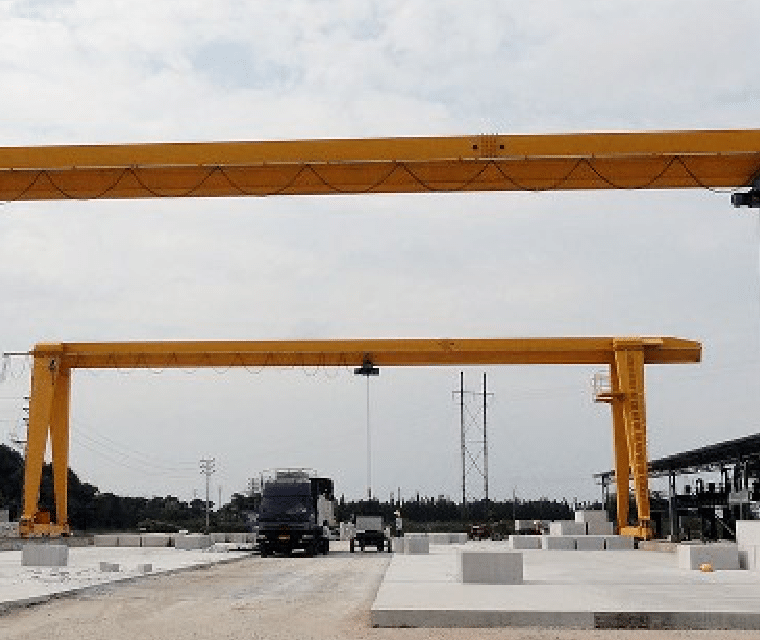In almost any factory setting, Electrical Chain Hoists really are a must-have. Great for providing vertical lifts, electric chain hoists are quite obvious as well as simple to use. This makes them a nice-looking selection for companies.

However, what's not too easy will be the task of choosing the best hoist to your requirements. Industry happens to be flooded with a large numbers of products, a few of which are subpar offerings. With all of manufacturers claiming the top spot, it may become difficult to select the correct one.
This is why, to ensure that you don't go overboard, we've gone ahead and compiled this entire guide to choosing electric chain hoists to use. When you go through the guide below, you have no trouble understanding which product you need to purchase.
But let's move on at the start and clear the air on which an electrical Chain Hoist is.
What exactly is an electrical Chain Hoist?
Basically, a power chain hoist is really a device that's utilized for vertically lifting and lowering any materials. The hoist is made up of an electric motor using a brake, Gearbox, Load Chain wheel along with a controller, which can be used to control the motions of the system. The lifting element used could be the Alloy Steel Chain.
These kind of hoists are excellent in factories and machine shops, which require fast lifting and loading items.
Factors to consider when choosing Electric Chain Hoists
Selecting the most appropriate chain hoist is among the essential prerequisites for any safe and efficient workshop environment. The following are many of the important aspects that needs to be noted when choosing the best product.
The body weight of the load: This is the first and most important aspect you will want to consider when selecting electric chain hoists. The strain you will be lifting determine the kind of hoist you need to buy. Typically of thumb, at under ten a lot of lifting capacity, a series hoist is preferred. However, for lifting greater weights, a wire hoist would work. But this doesn't hold with high lifting height. So, according to your industry requirements and needs, the option of hoists will be different.
Application Requirement: When you have determined the strain type, you'll want to figure out the approval to which you will end up putting the hoist. Ask yourself this: Can you put it on for product assembly? In that case, then extreme precision is really a prerequisite. Important too is always to know whether you're using any devices underneath the hook. Or what are your duty cycles?
Lifting Speed: The next key to consider is the lifting speed, which have to be carefully calibrated for your proper loading and unloading with the materials being lifted.
The job Environment: Perhaps more vital than lift speed will be the environment where your hoist is going to be used. Factory environments could be abrasive for machinery, and it is vital to view the impact the workplace may have on your equipment. By way of example, in the event the hoist is employed in extremely high-temperature environments, this can cause gearbox leakage and related hoist malfunctions. Similarly, shallow temperatures can cause cracks to produce or internal components to freeze. Setting where there are extreme temperature swings may also be detrimental towards the operation of one's hoist. Frequent temperature changes can lead to electrical short circuits and associated equipment malfunction.
The job Cycle: This means some time in which your hoist will be used. The volume of hours that the hoist will operate at a time may affect the robustness of the device. Along the obligation cycle is very important as electrical hoists should dissipate heat from the motors. What this means is they ought to be given sufficient downtime to cool down the and recover. Otherwise, you may try to be inviting equipment malfunctions.
The peak With the Lift: The peak that you have to lift the stress also plays an essential part within the selection of the hoist. Usually, electric chain hoists use a container where the excess chain is spooled. Naturally, the better the height, the more time the chain, and also this means a greater chain container. Or even designed properly, a too-large container could actually become an obstruction towards the load being lifted. An electrical Chain hoist is really a preferred selection for higher lifting height, e.g. windmill hoist for turbine maintenance.
The ability Source: The sort of hoist you might need will even determine the kind of source of energy that you need to use. For low-duty cycle applications, a single-phase hoist is enough. If, however, you need extremely high-duty cycles, then it is biggest score a three-phase hoist. This will likely ensure that you have sufficient power to the machine's operation.
Warranty: So far as machines go, an electrical hoist is one of the ones that undergo the typical wear and tear. Hence, to prevent repair costs, you should have a product which has attractive warranty features. Make certain that the hoist warranty covers all essential parts and labour. Usually, labour is more costly than parts, so it is best if the warranty includes both included.
Safety measures: Following the afternoon, an electric powered hoist is a machine. And in any setting where electrical equipment is getting used, accidents can happen. That's why, when buying the hoist, make certain it's got all essential safety features, like load limiters. Equally important are self-adjusting brakes and thermal overload protection.
More information about Electric Wire Rope Hoist visit our new webpage
